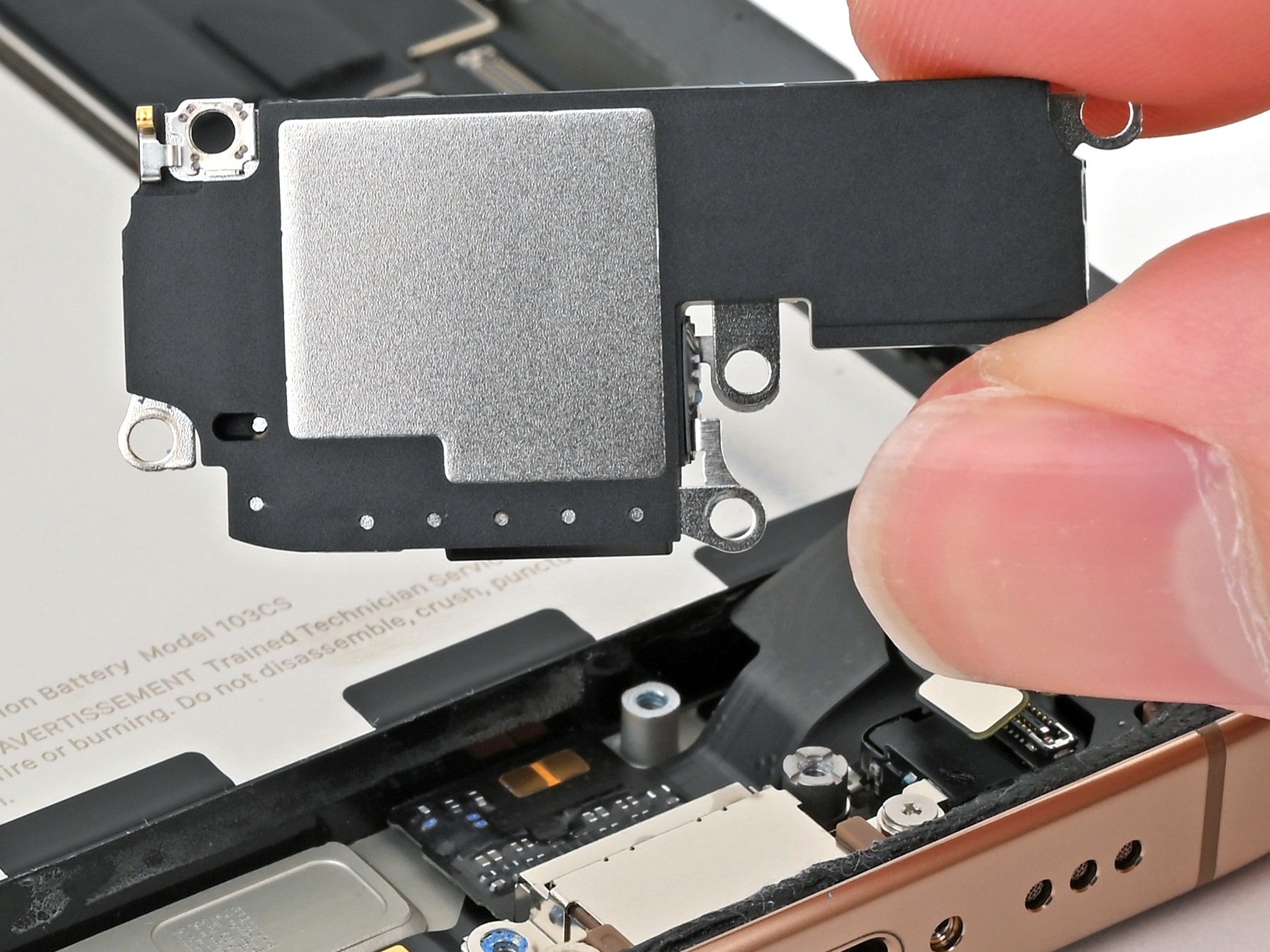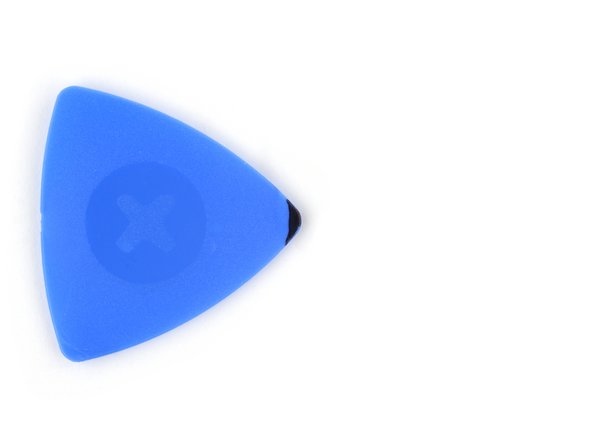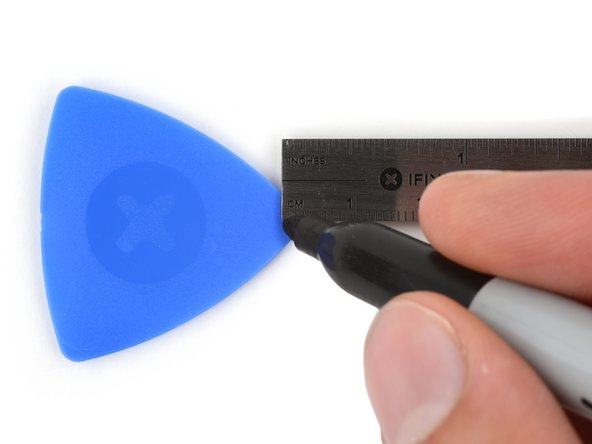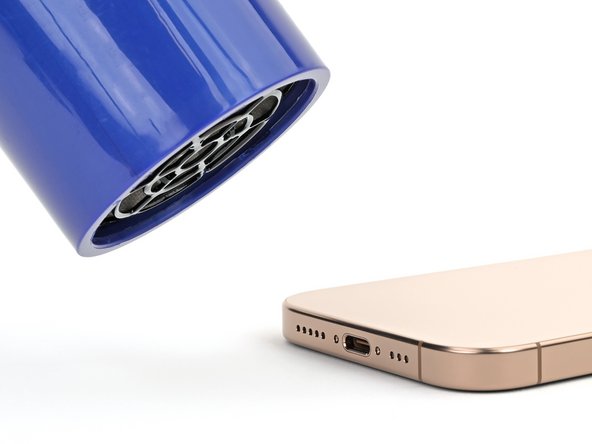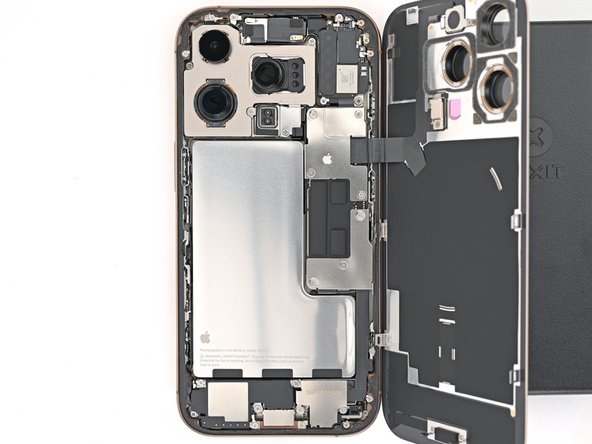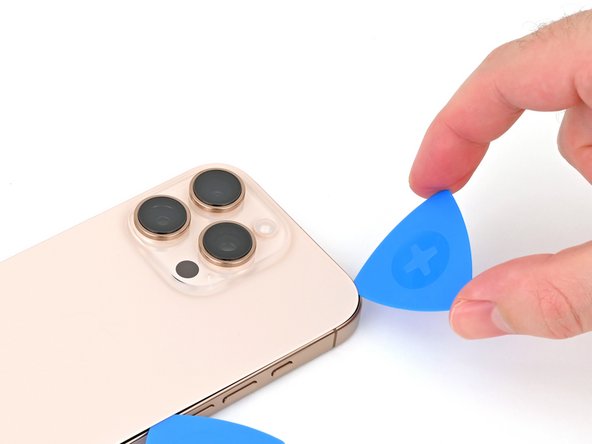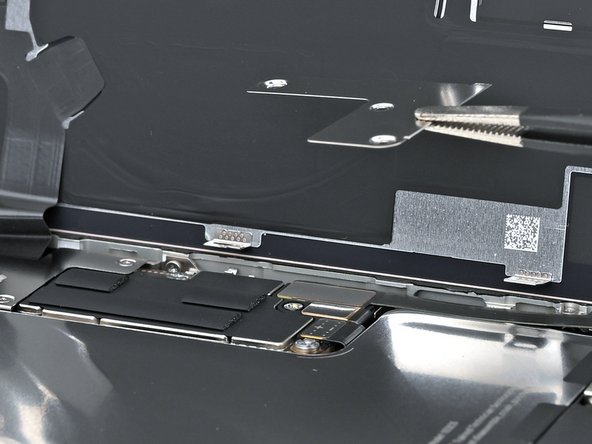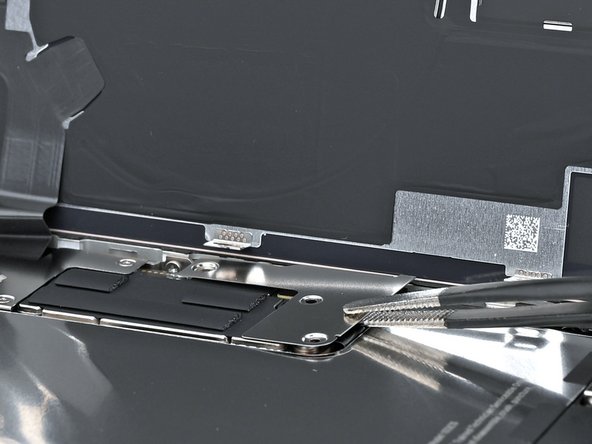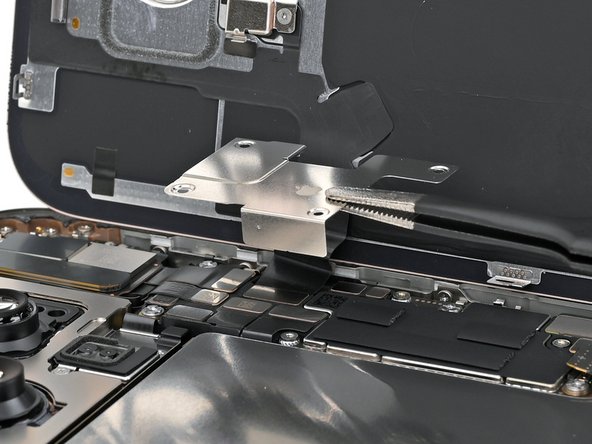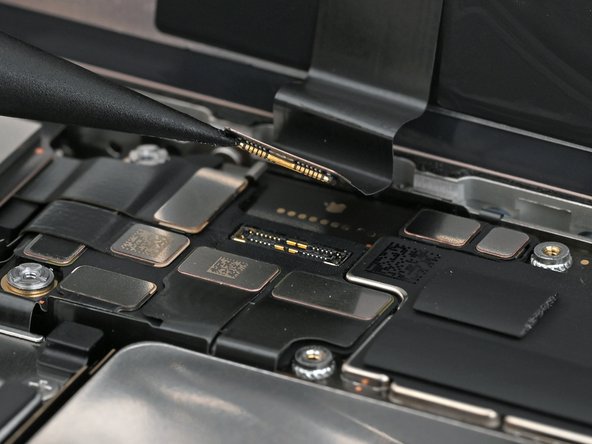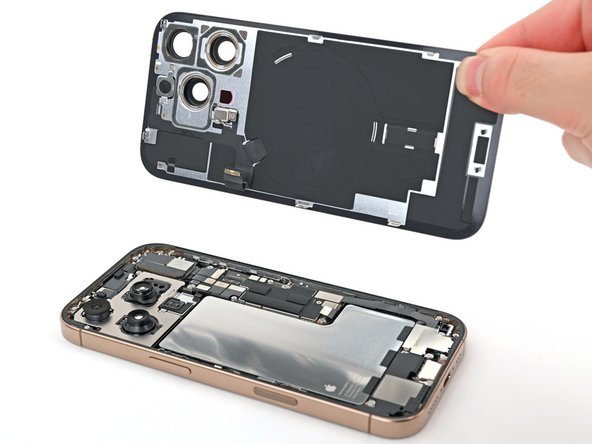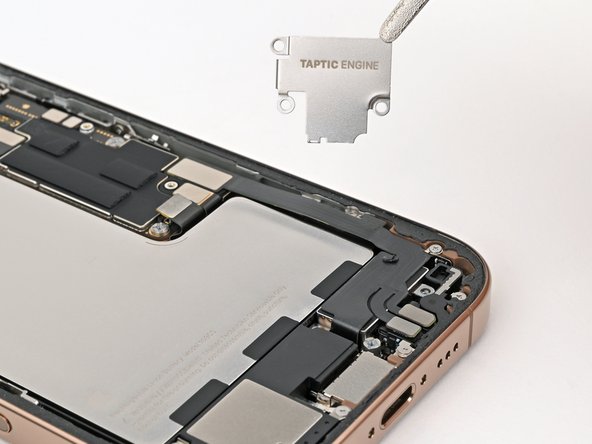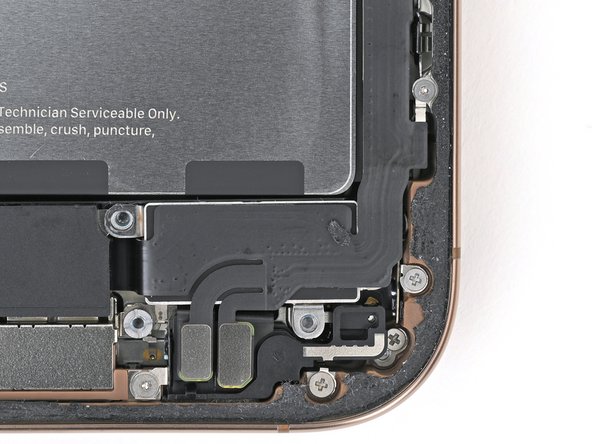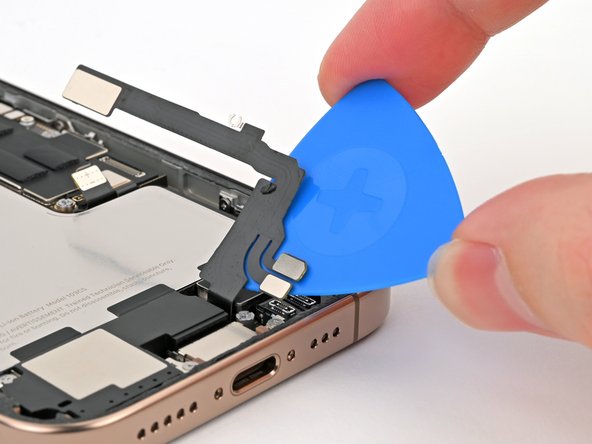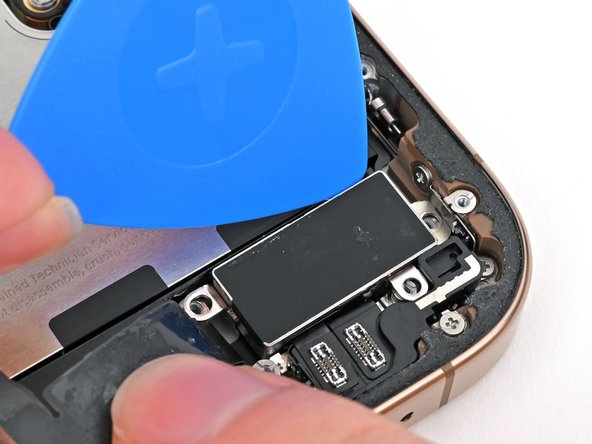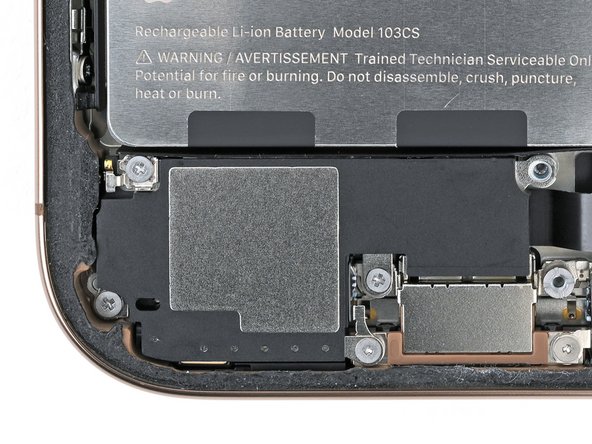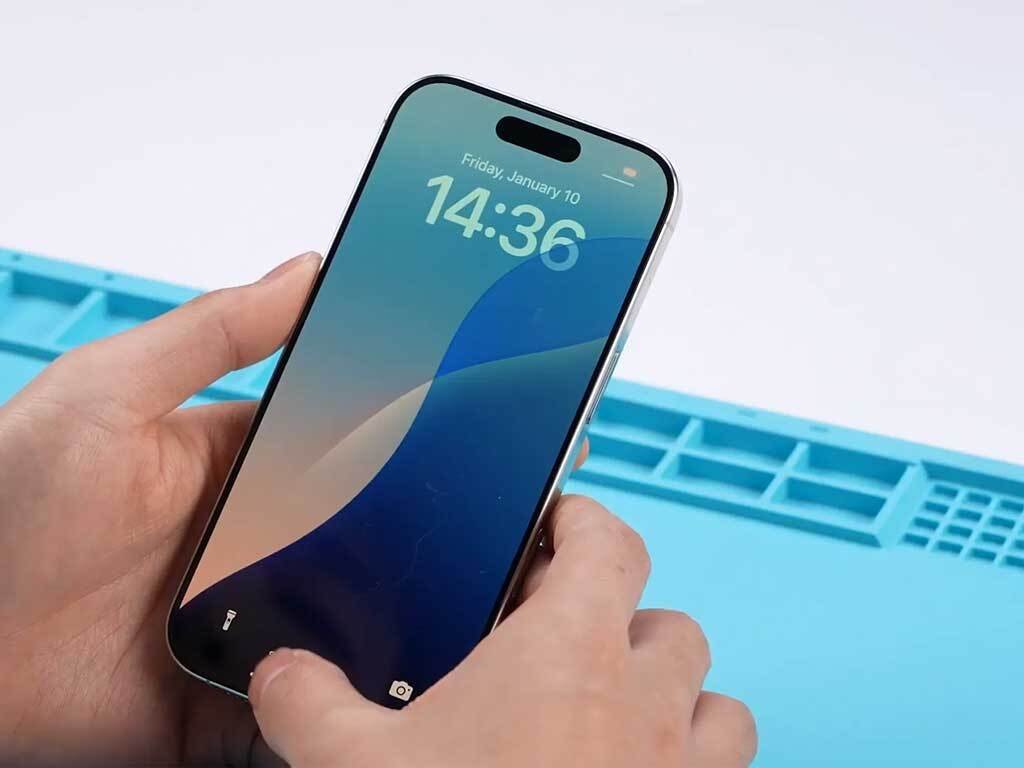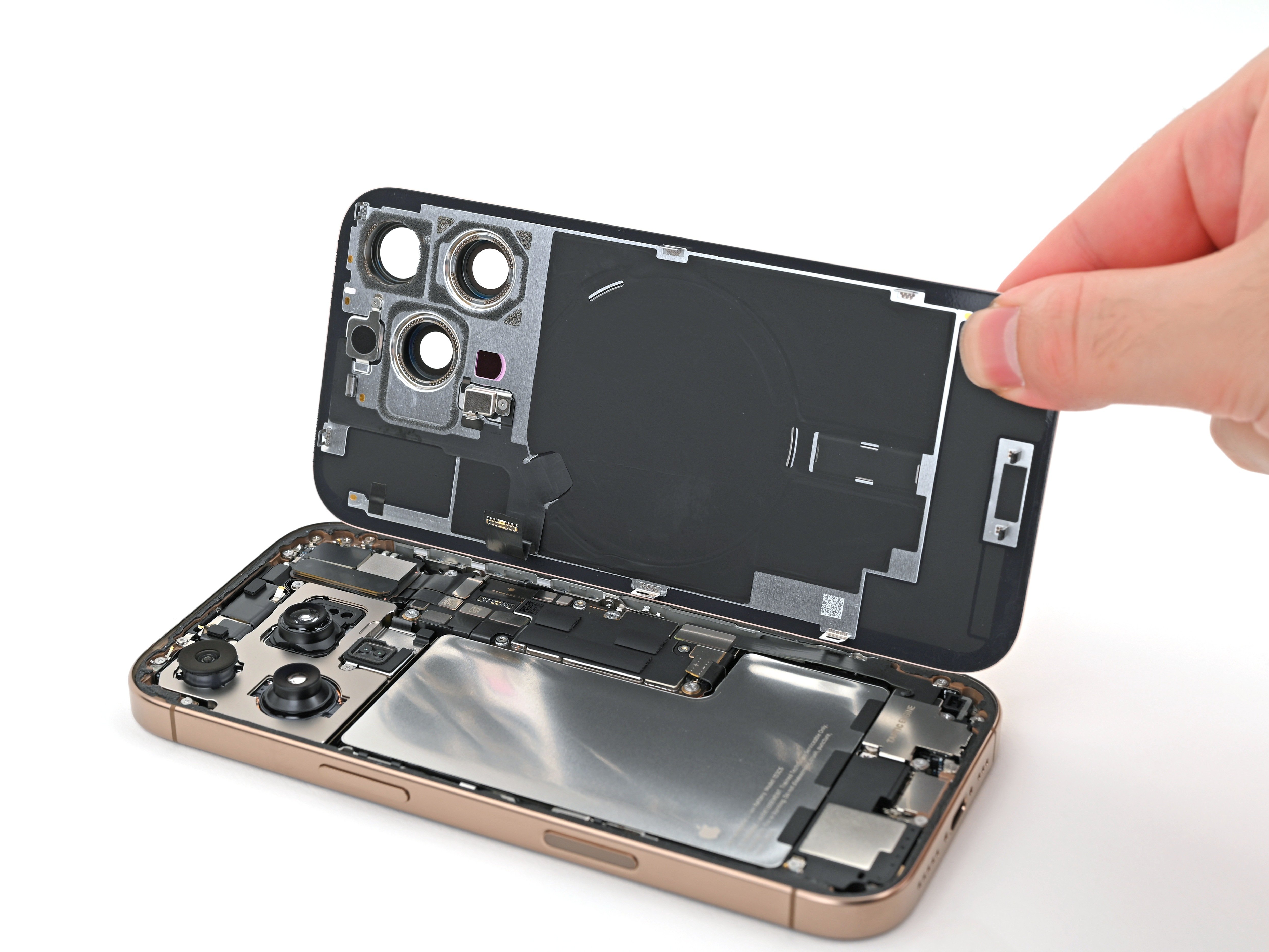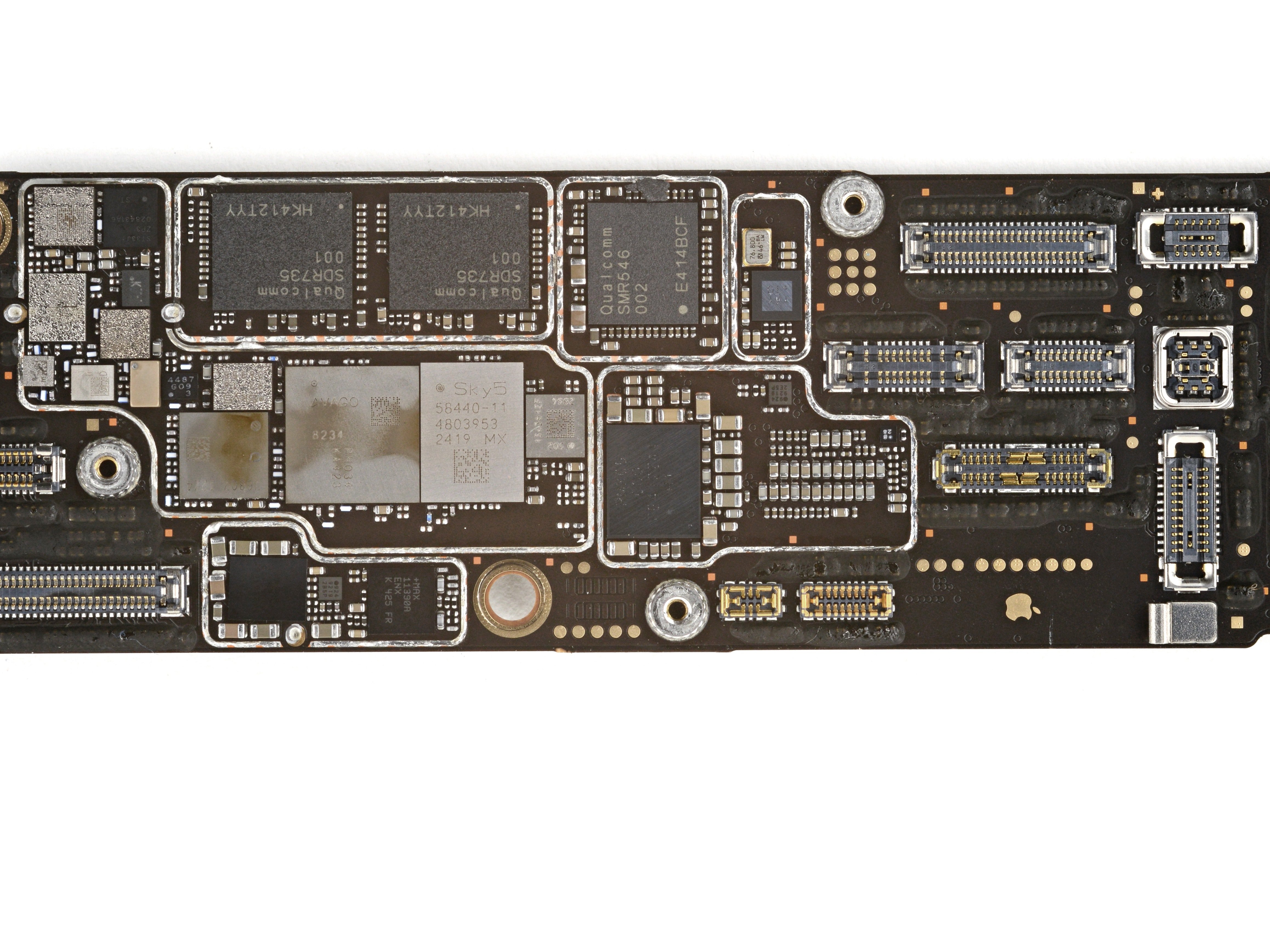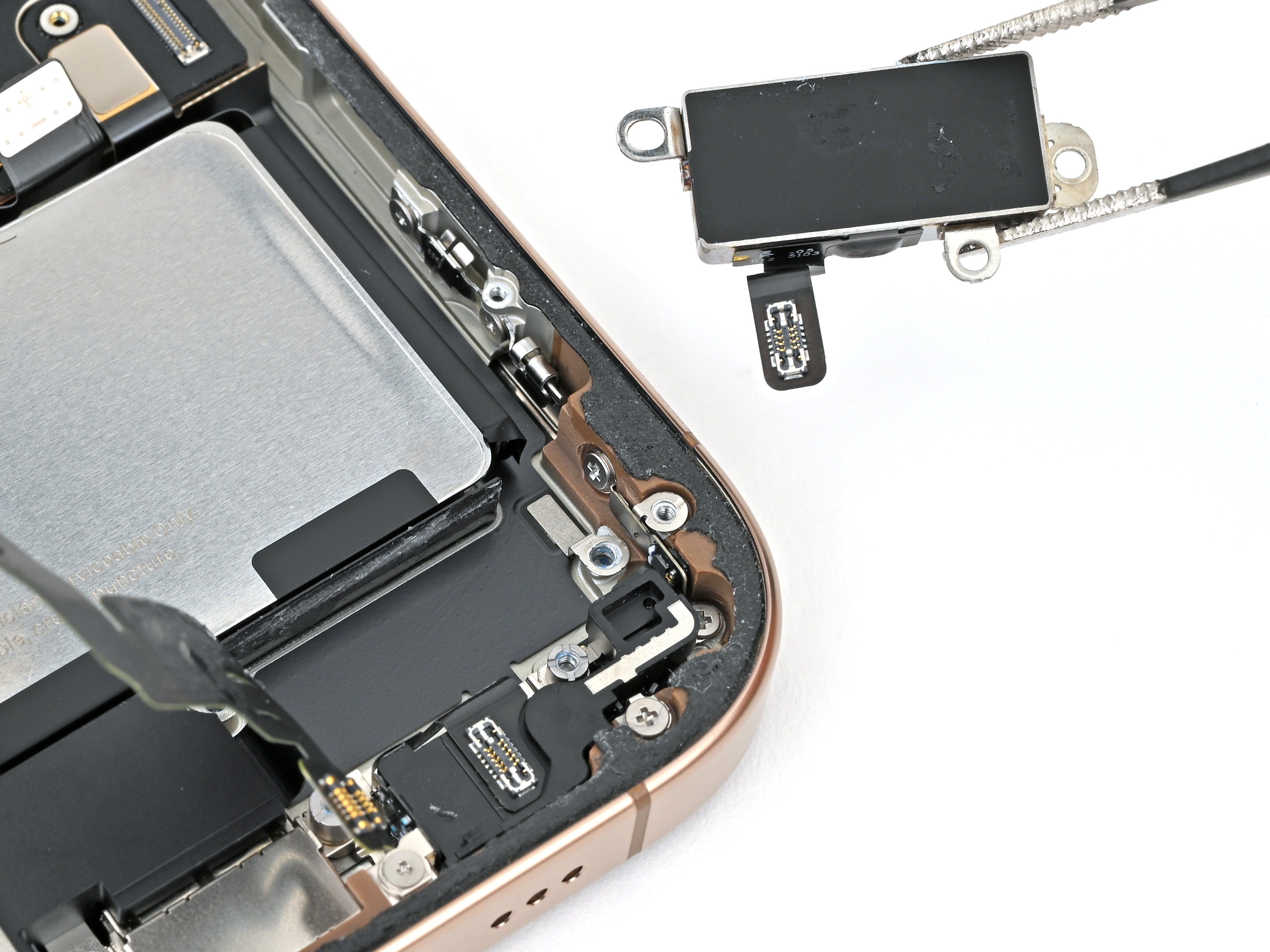iPhone 16 Pro Loudspeaker Replacement
Duration: 45 minutes
Steps: 34 Steps
If the sound from your iPhone 16 Pro's bottom speaker is sounding a bit off—faint, crackling, or just not up to par—it's probably time to swap out that loudspeaker. Don't worry, with the right tools and a little patience, this repair is totally doable. Just make sure you've got some replacement back glass adhesive on hand to seal it all back up once you're done. And if you ever find yourself needing help, feel free to schedule a repair.
Step 1
Let the battery run down below 25%—a fully charged lithium-ion battery can be a bit of a safety concern. If you need a hand, you can always schedule a repair.
- Disconnect all cables from your device to start fresh.
- Press and hold the power button along with either the volume up or volume down button, then slide to turn off the device. If you need a hand, you can always schedule a repair.
Step 2
Ensure there's a flat, clean spot near the bottom edge that's just the right size for a suction cup to grip onto. This makes lifting the panel a whole lot easier and safer.
- If your screen or back glass is shattered and cracked, lay down some overlapping pieces of packing tape over the broken glass. This helps keep the shards contained, keeps you safe, and makes the disassembly process a lot smoother. Take your time and proceed carefully—if you need a hand, you can always schedule a repair.
Tools Used
Step 3
- Grab your opening pick and measure about 3 mm from the tip. Mark that spot with a permanent marker, so you know exactly where to start.
Be careful not to insert the pick too deep, as it can harm your device. To avoid this, mark your pick beforehand so you know when to stop. You can also label the other corners of the pick with different measurements for clarity. Or, for a simple trick, tape a coin 3 mm from the tip of the pick—this acts as a handy depth guide. If you need a hand with this step, you can always schedule a repair.
Step 4
- Grab your trusty P2 pentalobe screwdriver and carefully unscrew the two 7.4 mm-long screws sitting on each side of the USB-C port.
Step 5
Keep an eye on the heat—overheating the phone can cause some serious battery issues. Let's not cook it! If you're unsure, take a break and double-check. Need extra help? You can always schedule a repair.
If you're feeling a bit adventurous, grab a hair dryer or a heat gun and give the bottom edge of that back glass a warm hug until it’s nice and toasty!
- Gently press a heated iOpener against the bottom edge of the back glass and hold it there for about two minutes. This helps loosen the adhesive so the glass can be removed more easily. If you need a hand with the repair, you can always schedule a repair.
Tools Used
Step 6
- Place a suction handle near the bottom edge of the back glass, just above the USB-C port.
- Gently but firmly pull on the handle to create a little gap between the back glass and the frame.
- Slide the tip of an opening pick into that gap and work your way in.
Tools Used
Step 7
As you carefully cut through the adhesive that holds the back glass in place, keep an eye out for these important areas:
If you happen to tweak those spring contacts a bit too much, no worries! Just use a spudger or opening pick to gently nudge them back into place so they fit snugly against their shiny gold contact pads on the back glass.
- There's a fragile cable linking the back glass to the phone, right next to the volume up button. Be careful not to insert your pick here, or you might slice the cable instead of safely prying.
- Around the edges of the phone, you'll find a bunch of spring contacts. Take your time and be extra gentle—don't push your pick in too deep in each step to avoid bending those contacts out of shape.
Tools Used
Step 8
Keep your pick to a maximum of 5 mm on the bottom edge—it's a delicate zone! We don't want to accidentally mess up the spring contact.
- Gently glide your pick along the bottom edge, wiggling it back and forth to loosen that stubborn adhesive.
- Keep your pick snugly in the bottom right corner to stop the adhesive from sealing back up. You're doing great!
Step 9
- Warm up the right edge of the back glass until it feels nice and toasty to the touch.
Step 10
Be careful around the volume buttons—they're close to the wireless charging and flash cable. Slicing too deep here could cause some unnecessary damage. Take your time and keep it gentle. If you need help, you can always schedule a repair.
- Gently slide your pick around the bottom right corner and up halfway along the right edge—feel for that satisfying hard stop at the clip holding the back glass in place.
- Keep that pick in place to hold the adhesive back and prevent it from sealing up again.
Step 11
- Warm up the left edge of the back glass until it's comfortably hot to handle.
Step 12
As you gently pass over the clips, you'll notice and hear them click free—that's the sound of those metal catches letting go. Keep at it steadily, and you'll free everything up in no time.
- Pop in a second opening pick at the bottom edge of your device.
- Gently slide that pick around the bottom left corner and along the left side to break the adhesive's grip and free the metal clips. Smooth moves here!
- Leave the pick in place at the top left corner to keep that adhesive from sticking back together—nice and steady!
Step 13
- Warm up the top edge of the back glass, including the area around the volume buttons, until it feels nice and toasty to the touch.
Step 14
Keep your pick no deeper than 3 mm along the top edge to dodge any spring contact mishaps.
As you work your way through, you'll hear and feel those satisfying little clicks when the top two clips pop free.
- Gently slide your opening pick along the top edge and curve it around the top right corner up to the volume up button to loosen the adhesive.
Step 15
Hold up on pulling off that back glass just yet—it's still snugly attached with a delicate ribbon cable. Keep following the next few steps to remove it safely and smoothly.
If the back glass isn’t swinging open like it’s supposed to, don’t go all Hulk on it—just take your pick and circle around the edges again to spot any sticky adhesive or clips playing hide and seek.
Think about using some polyimide tape to shield those rear camera lenses while you’re inside the phone. Be gentle—no pushing on the lenses, or you might mess with their delicate stabilizers.
You might have to give the back glass a little lift before swinging it open to fully free those clips holding it tight.
- Gently swing the back glass open towards the volume buttons, like you're opening a secret compartment.
- Prop the back glass up with something solid and clean—maybe a small box—just to make sure that cable doesn’t get stressed.
- Now, carefully remove the opening picks. You're almost there!
Tools Used
Step 16
- Grab your tri-point Y000 screwdriver and get ready to unscrew the three little screws holding down the lower connector cover:
- Two screws that are 1.2 mm long—tiny but important!
- One screw that's just 1.0 mm long—this one’s the smallest of the bunch.
Tools Used
Step 17
- Grab your tweezers or just use your fingers to carefully lift and remove the lower connector cover.
Tools Used
Step 18
- Grab your spudger's pointy end and gently pry up to disconnect the battery press connector. When putting everything back together, line up the connector carefully over its socket and press down with your fingertip or the flat end of a spudger—start on one side, then the other—until it clicks into place. No need to force it; if it’s giving you trouble, just reposition and try again. If you need help, you can always schedule a repair.
Tools Used
Step 19
- Grab your tri-point Y000 screwdriver and carefully unscrew the four screws holding the upper connector cover in place:
- Two screws that are 1.0 mm long
- One screw that’s 1.2 mm long
- One screw that’s 1.6 mm long
Tools Used
Step 20
- Grab your trusty tweezers or just your fingers, and gently lift off the upper connector cover. You've got this!
Tools Used
Step 21
- Grab a spudger and gently pry up to disconnect the back glass press connector. Keep it cool and steady—you're doing great! If you need help, you can always schedule a repair.
Tools Used
Step 22
- Carefully lift the back glass away from the frame and take it off.
- When putting everything back together:
- Here’s a smart move—before sealing the phone up, temporarily reconnect the battery and back glass (skip the adhesive for now), power on your device, and check that everything is working smoothly. Then power it down, disconnect the battery, and carry on with reassembly.
- Follow this guide to properly reapply adhesive and reinstall the back glass.
Step 23
- Grab a Phillips screwdriver and carefully remove the three screws holding down the Taptic Engine cover: one 3.0 mm-long screw and two 1.7 mm-long screws. If you hit a snag or need a hand, you can always schedule a repair.
Step 24
- Grab some tweezers or just use your fingers to gently lift up the top edge of the Taptic Engine cover.
- Once the bottom edge pops free from the frame, go ahead and remove the cover entirely.
- When putting everything back together, double-check that the bottom edge of the cover clicks back into the frame securely.
Tools Used
Step 25
- Grab the spudger and gently use its point to pry up the lower assembly cable press connector, disconnecting it from the logic board.
Tools Used
Step 26
- Grab your spudger and gently pry up the two press connectors near the bottom right edge of the frame to disconnect them. Keep at it carefully—you're making progress!
Tools Used
Step 27
- Grab your trusty tri-point Y000 screwdriver and use it to remove the 1.0mm screw that's keeping the lower assembly cable in place.
Tools Used
Step 28
- Grab an iOpener or a trusty hair dryer and warm up the lower assembly cable area right above the Taptic Engine. Get it nice and toasty to the touch – but be careful not to burn yourself, alright?
Tools Used
Step 29
- Gently slide a plastic opening pick under the lower assembly cable to free it from the Taptic Engine. Then, carefully bend the cable out of the way to give yourself clear access to the Taptic Engine. If you need help, you can always schedule a repair.
Step 30
- Grab your trusty Phillips screwdriver and unscrew the 1.9 mm-long screw holding down the Taptic Engine.
Step 31
- Gently glide the edge of your opening pick along the top of the Taptic Engine to carefully detach the plastic buffer strip that's sticking to it.
Step 32
Be gentle around the battery — no prying or poking, or you might cause trouble. Take your time and handle it with care!
- Gently use the tip of a spudger to lift the Taptic Engine starting at its top-right corner.
- Carefully take out the Taptic Engine.
Tools Used
Step 33
- Let's kick things off by removing the four screws holding the loudspeaker in place:
- Two Phillips screws, each 1.6 mm long
- One Phillips screw, 2.0 mm long
- One tri-point Y000 screw, 1.3 mm long
Step 34
- Gently slide the tip of a spudger into the bottom-right screw hole of the loudspeaker.
- Carefully pry up and lift out the loudspeaker to get it out of the way.
